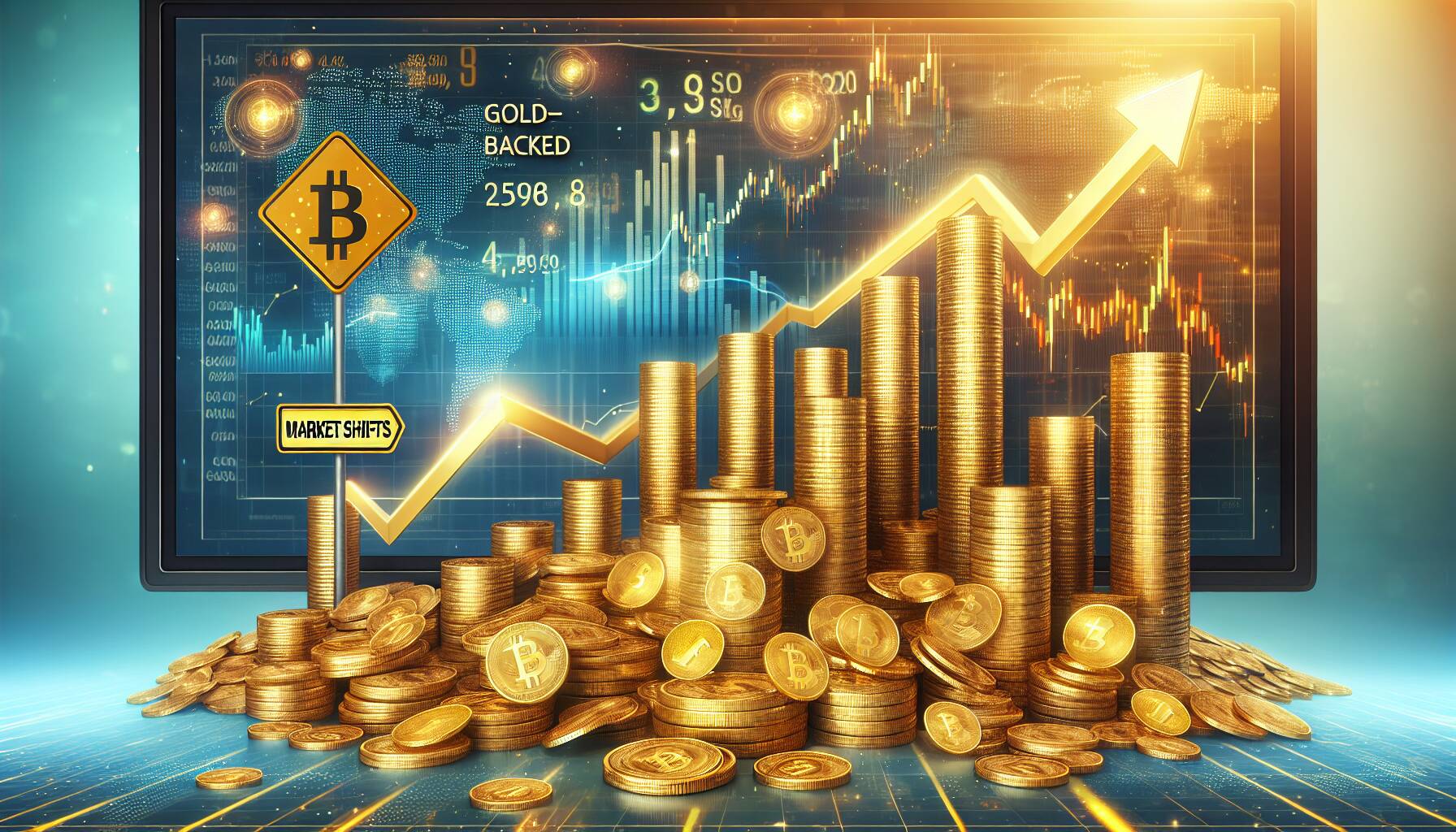This week has marked a historic moment in the world of commodity-backed cryptocurrencies, particularly those linked to gold. Issuance of these digital tokens has surged to unprecedented levels, with minting volumes hitting a remarkable $439 million — the highest in at least five years. This spike comes on the heels of gold futures recently trading above a staggering $3,500, an all-time high, spurred by concerns from the Swiss Precious Metals Association regarding the potential negative impact of U.S. tariffs on Switzerland’s gold imports.
Despite a pullback following a statement from a White House official indicating that gold bar imports would not face tariffs, the momentum for gold-backed cryptocurrencies persisted. Tokens such as Tether Gold (XAUT) and Paxos Gold (PAXG) momentarily topped $3,390 before settling down. This trend showcases the growing allure of these tokens, which are backed by physical gold reserves stored in vaults and allow for seamless international transactions without the hassle of crossing borders.
Switzerland plays a crucial role in the gold market, refining a significant portion of the world’s gold despite lacking its own mines. Over the past year, it has exported more than $61 billion worth of gold to the U.S. The recent tariff warnings have ignited political discussions in Switzerland, with some lawmakers urging the gold sector to bear some responsibility for the economic implications of these trade tensions. Notably, the precious metal accounts for over a quarter of Switzerland’s exports, a figure highlighted by the Swiss National Bank.
“The minting of gold-backed cryptocurrencies is a clear indicator of investor confidence amidst global economic uncertainties.”

Surge in Commodity-Backed Cryptocurrencies
The recent surge in commodity-backed cryptocurrencies has significant implications for investors and the gold market.
- Historic Issuance Surge:
- Minting volumes for gold-backed tokens reached $439 million, more than double the previous record.
- This reflects increasing investor interest in securing assets backed by physical commodities.
- Gold Futures Surge:
- Gold futures traded above a $3,500 all-time high, attracting more investors to gold-backed assets.
- This surge indicates greater market volatility and potential for significant price fluctuations.
- Political Ramifications:
- The U.S. tariffs on Switzerland raised concerns about the international gold trade and prices.
- Political backlash in Switzerland highlights the interconnectedness of trade, politics, and market stability.
- Instant Transfer and Accessibility:
- Gold-backed cryptocurrencies allow for secure and quick transactions across borders without the need for physical transfer.
- This enhances liquidity and makes gold investments more accessible to a broader audience.
- Impact on Swiss Economy:
- Gold constitutes over a quarter of Switzerland’s exports, making its economy sensitive to gold price fluctuations.
- Changes in the gold market can influence the economic stability of Switzerland and impact global markets.
Surge of Gold-Backed Cryptocurrencies Amid Market Volatility
The recent boom in commodity-backed cryptocurrencies, particularly gold-backed tokens, has created a dynamic shift in the digital asset landscape. With minting volumes reaching a staggering $439 million—the highest in five years—these cryptocurrencies have started to capture investor interest as traditional markets experience turbulence. This increase comes on the heels of gold futures exceeding historic highs, highlighting the interplay between physical commodities and digital finance.
Competitive Advantages: One of the primary advantages of gold-backed cryptocurrencies is their intrinsic value tied to a physical asset, providing a hedge against market volatility. Unlike conventional cryptocurrencies, which can be subject to extreme price swings due to speculative trading, gold-backed tokens offer a sense of security rooted in a stable commodity. Investors looking for safer investment options during times of uncertainty may find these tokens particularly appealing. Moreover, the ability to transfer these assets on-chain allows for seamless cross-border transactions without the restrictions that typically accompany physical gold movement.
Competitive Disadvantages: However, the recent surge does not come without its challenges. The political ramifications of U.S. tariffs on Switzerland may lead to a more complicated regulatory environment for these tokens. This uncertainty could deter potential investors wary of future meddling in the gold market. Furthermore, as prices fell following governmental reassurances regarding tariff exemptions, the apparent volatility in the gold-backed token market could raise red flags for conservative investors.
This situation is likely to benefit younger, tech-savvy investors who are more inclined to embrace innovative financial solutions and who see value in combining traditional assets with blockchain technology. Conversely, established investors who prioritize stability and may have an inherent distrust of cryptocurrencies could view this development as a potential risk, leading them to hesitate in allocating funds to such assets. As the market adapts to these changes, the balance between opportunity and risk will be crucial in determining the future of commodity-backed cryptocurrencies.
















